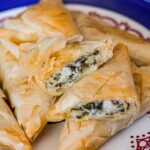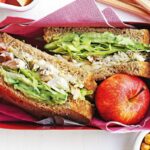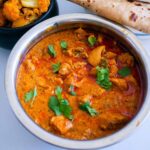Embark on a culinary journey where deliciousness meets dietary needs! Imagine a world of vibrant, flavorful meals free from the constraints of egg allergies. This guide unveils a treasure trove of egg-free recipes, meticulously crafted for breakfast, lunch, dinner, and even those delightful between-meal snacks. From fluffy pancakes that rival their egg-laden counterparts to hearty main courses bursting with flavor, we’ll explore creative substitutions and techniques that ensure both taste and allergy-friendliness are never compromised. Prepare to discover a new level of culinary freedom and satisfaction.
We’ll delve into the practical aspects of egg-free cooking, addressing common challenges like achieving the right texture in baked goods and finding suitable replacements for eggs in various recipes. Each recipe is detailed with step-by-step instructions, nutritional information, and stunning visuals to guide you through the process. Whether you’re a seasoned chef or a kitchen novice, this guide provides the tools and inspiration to create delectable, allergy-conscious meals for everyone to enjoy.
Dinner Sensations
Egg-free cooking doesn’t mean sacrificing flavor or texture at dinnertime. These recipes demonstrate how to create satisfying and delicious main courses without relying on eggs, catering to various dietary needs and preferences. We’ll explore three distinct options: a vibrant vegetarian dish, a hearty vegan option, and a flavorful meat-based recipe. The comparison of egg-free and egg-containing versions of classic dishes will highlight how easily you can adapt your favorite recipes.
Egg-Free Main Course Recipes
Creating delicious egg-free main courses requires understanding how to achieve the desired texture and binding without eggs. These recipes showcase alternative methods, using ingredients like flaxseed meal, mashed potatoes, or cornstarch to create structurally sound and flavorful dishes.
Creamy Vegan Butternut Squash Risotto
This vibrant risotto boasts a rich, creamy texture without any dairy or eggs. The butternut squash provides natural sweetness and a beautiful color.
- Sauté Aromatics: Imagine a pan shimmering with olive oil, where finely diced shallots and garlic gently soften, releasing their fragrant aroma. The shallots, translucent and golden, mingle with the pungent garlic, creating a flavorful base. (Image description: A cast iron skillet on a stovetop, filled with lightly browned shallots and garlic cloves in olive oil. Steam rises gently.)
- Add Rice and Toast: Arborio rice is added to the pan, its grains glistening as they toast lightly in the fragrant oil, absorbing the flavors of the shallots and garlic. (Image description: Arborio rice being stirred in the skillet, its grains becoming translucent at the edges.)
- Deglaze and Simmer: Dry white wine is poured into the pan, deglazing the bottom and releasing any browned bits. The wine reduces, creating a flavorful base for the risotto. Vegetable broth is added gradually, stirring continuously until each addition is absorbed before adding more. (Image description: White wine being poured into the skillet, followed by a close-up of the simmering risotto, the broth being gently stirred.)
- Incorporate Squash: Pureed butternut squash is stirred into the risotto, its vibrant orange color enriching the dish. The creamy squash adds both sweetness and texture. (Image description: Smooth butternut squash puree being stirred into the risotto, its color blending with the rice.)
- Finish and Serve: Freshly grated Parmesan cheese (optional, for a non-vegan version) and chopped fresh sage are stirred in. The risotto is served immediately, its creamy texture contrasting beautifully with the slightly firm rice. (Image description: A bowl of creamy butternut squash risotto, garnished with fresh sage and Parmesan cheese, steam rising gently.)
Hearty Lentil Shepherd’s Pie (Vegetarian)
This comforting classic gets a vegetarian twist, using lentils as a base for the filling, topped with a creamy, egg-free mashed potato topping.
- Sauté Vegetables: Carrots, celery, and onions are sautéed until softened, their colors deepening and releasing their sweet aromas. (Image description: A pan filled with brightly colored diced carrots, celery, and onions, sautéing in butter or olive oil.)
- Add Lentils and Spices: Brown or green lentils are added to the pan along with herbs and spices, creating a fragrant and flavorful base. (Image description: Lentils being added to the pan with the sautéed vegetables, along with a sprinkle of herbs and spices.)
- Simmer in Broth: Vegetable broth is added, and the mixture is simmered until the lentils are tender but still hold their shape. (Image description: The pan simmering on the stove, with steam rising from the lentil mixture.)
- Prepare Mashed Potatoes: Potatoes are boiled until tender, then mashed with plant-based milk or butter and seasonings. (Image description: A bowl of fluffy mashed potatoes, creamy and smooth in texture.)
- Assemble and Bake: The lentil mixture is transferred to a baking dish, topped with the mashed potatoes, and baked until golden brown and bubbly. (Image description: A baking dish filled with the lentil mixture, topped with a layer of creamy mashed potatoes, ready to be baked.)
Pan-Seared Salmon with Roasted Asparagus
This elegant dish features perfectly pan-seared salmon, complemented by tender roasted asparagus. It’s a simple yet impressive meal that’s naturally egg-free.
- Prepare Asparagus: Asparagus spears are tossed with olive oil, salt, and pepper, then roasted until tender-crisp. (Image description: A baking sheet filled with asparagus spears tossed in olive oil and seasonings, ready to be roasted.)
- Sear Salmon: Salmon fillets are seasoned with salt, pepper, and herbs, then pan-seared in olive oil until cooked through and slightly crispy on the outside. (Image description: Salmon fillets being pan-seared in a hot skillet, their edges turning golden brown.)
- Serve: The pan-seared salmon is served alongside the roasted asparagus. A squeeze of lemon juice brightens the flavors. (Image description: A plate with a perfectly pan-seared salmon fillet, accompanied by a side of roasted asparagus, garnished with a lemon wedge.)
Texture and Flavor Comparison
Egg-free versions of dishes like quiche and omelets often require creative substitutions to achieve similar textures. While a traditional quiche relies on eggs for binding and richness, egg-free versions might use a mixture of pureed vegetables, silken tofu, or a starch-based binder. The texture might be slightly less custardy, but the flavor profile can be just as satisfying. Similarly, egg-free omelets, often made with chickpea flour or blended vegetables, may have a slightly different texture, but the addition of herbs and spices can compensate for the absence of eggs.
Recipe Comparison Table
| Recipe | Preparation Time | Cooking Time | Difficulty |
|---|---|---|---|
| Creamy Vegan Butternut Squash Risotto | 20 minutes | 35 minutes | Medium |
| Hearty Lentil Shepherd’s Pie | 25 minutes | 45 minutes | Medium |
| Pan-Seared Salmon with Roasted Asparagus | 10 minutes | 20 minutes | Easy |
Snack Attack

Indulge in a world of delightful and allergy-friendly snacks, perfect for satisfying those between-meal cravings without compromising on taste or health. These recipes are designed to be adaptable to various dietary needs, ensuring everyone can enjoy a delicious and safe treat. We’ll explore simple substitutions to make your favorite baked goods egg-free, and delve into the crucial importance of careful ingredient selection to avoid hidden allergens.
Egg-free baking can seem daunting, but with the right techniques and substitutions, you can achieve wonderfully moist and flavorful results. The key lies in understanding how eggs contribute to baked goods – binding, leavening, and adding moisture – and finding suitable replacements that replicate these functions. We’ll explore several options, focusing on achieving optimal texture and taste in cookies and muffins.
Egg-Free Snack Recipes
This section provides five delicious and allergy-friendly snack recipes, demonstrating the versatility of egg-free baking and highlighting the importance of ingredient selection. Each recipe is designed to be adaptable to various dietary restrictions, including gluten-free and dairy-free options.
- Dairy-Free & Gluten-Free Banana Oat Muffins: Imagine fluffy, moist muffins bursting with the sweetness of ripe bananas and the wholesome goodness of oats. These muffins use mashed banana as a natural binder and sweetener, applesauce for moisture, and a flax egg (1 tablespoon flaxseed meal mixed with 3 tablespoons water) for structure. The absence of gluten and dairy makes them suitable for a wide range of dietary needs. The golden-brown tops hint at the soft, tender interior, perfect for a satisfying afternoon snack.
- Chocolate Avocado Brownies (Vegan & Gluten-Free): Rich, decadent brownies that are surprisingly healthy and allergy-friendly. The creamy texture comes from ripe avocado, while cocoa powder provides the intense chocolate flavor. These brownies utilize a blend of gluten-free flour and cornstarch for a fudgy texture, and maple syrup adds a touch of natural sweetness. The deep, dark brown color of the brownies speaks to their rich, intensely chocolatey flavor.
- Spicy Pumpkin Seeds (Vegan & Gluten-Free): A simple yet flavorful snack. Pumpkin seeds are roasted to perfection with a blend of chili powder, cumin, and smoked paprika. The vibrant orange hue of the roasted seeds contrasts beautifully with their dark, spicy seasoning. The resulting snack offers a satisfying crunch and a warm, comforting spice.
- Apple Cinnamon Quinoa Bites (Vegan & Gluten-Free): These delightful bites combine the sweetness of apples with the nutty flavor of quinoa. The mixture is sweetened with maple syrup and spiced with cinnamon, creating a wholesome and satisfying snack. Their warm, earthy tones and delicate sweetness make them perfect for a light and healthy treat.
- Dairy-Free Coconut Macaroons (Vegan & Gluten-Free): Sweet, chewy, and utterly irresistible. These macaroons use shredded coconut as the base, bound together with a simple mixture of coconut milk and maple syrup. The lightly toasted coconut adds a delightful hint of caramel, enhancing the overall flavor. Their delicate, snow-white appearance belies their intense coconut flavor.
Egg Substitutions in Baking
Understanding the role of eggs in baking is crucial for successful egg-free substitutions. Eggs act as binders, leaveners, and emulsifiers. Replacing them requires careful consideration of each function. Here, we detail successful replacements for cookies and muffins.
In cookies, eggs provide structure and moisture. Flax eggs (1 tbsp flaxseed meal mixed with 3 tbsp water), applesauce, or mashed banana can effectively replace eggs, providing binding and moisture. For example, in a chocolate chip cookie recipe, substituting a flax egg for each egg will maintain the cookie’s chewiness and prevent it from crumbling.
In muffins, eggs contribute to both structure and leavening. Applesauce or mashed banana can add moisture and binding, while baking powder or baking soda provides leavening. For instance, in a blueberry muffin recipe, using applesauce instead of eggs will result in moist, tender muffins with a slightly different texture.
Reading Food Labels
Careful scrutiny of food labels is paramount when following an egg-free diet. Many processed foods contain hidden egg ingredients, such as lecithin (often derived from eggs), or are processed in facilities that handle eggs, potentially leading to cross-contamination. Always check the ingredient list and allergen statements for potential sources of egg and other allergens. Look for certifications like “certified gluten-free” or “vegan” to help ensure the product aligns with your dietary needs. Be mindful of phrases like “may contain traces of egg” indicating potential cross-contamination risks.
This exploration of egg-free cooking demonstrates that delicious and allergy-friendly meals are entirely achievable. We’ve journeyed through a diverse range of recipes, showcasing the versatility of egg substitutes and the potential for creative culinary expression. Remember, careful ingredient selection and a dash of culinary ingenuity are key to crafting satisfying meals that cater to dietary restrictions without sacrificing flavor. Embrace the freedom to create meals that nourish both body and soul, knowing that delicious and allergy-safe options are readily available.
Top FAQs
What are the best egg substitutes for baking?
The ideal substitute depends on the recipe. Applesauce, mashed banana, flaxseed meal, and silken tofu are common choices, each impacting texture differently. Experiment to find what works best.
Can I freeze egg-free dishes?
Many egg-free dishes freeze well, but consider the specific ingredients. Some sauces or creamy components may separate upon thawing. Always allow for proper cooling before freezing.
How long do egg-free baked goods last?
This varies depending on the recipe and storage. Properly stored egg-free baked goods generally last for 3-5 days at room temperature and up to a month in the freezer.


